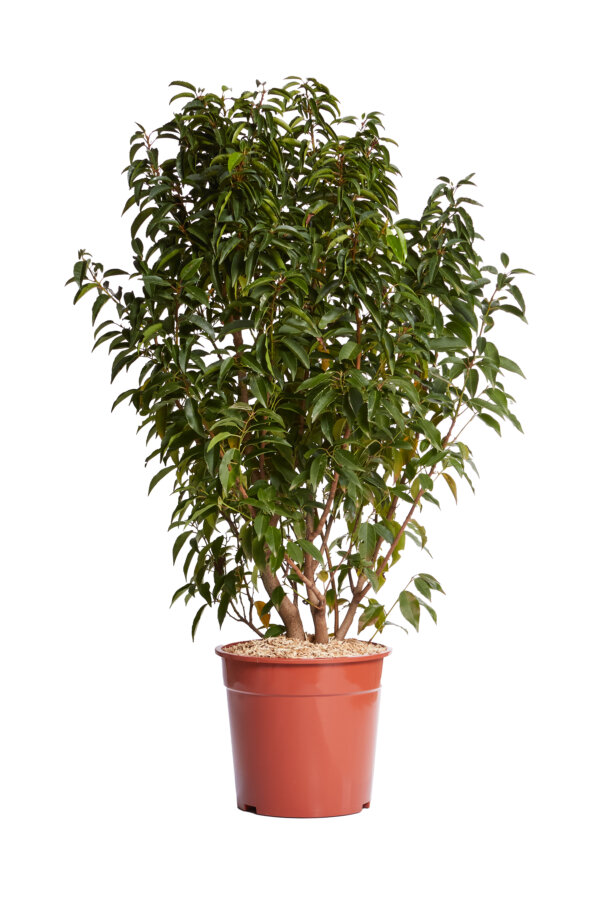VIBURNUM TINUS EVE PRICE
Viburnum tinus ‘Eve Price’ is a compact and decorative variety of evergreen viburnum, belonging to the Adoxaceae family, which stands out for its abundant winter flowering and dense, rounded shape. This cultivar is particularly appreciated for its ability to maintain a green and fresh appearance throughout the year, even in the coldest months, making it ideal for gardens that need a touch of colour and vitality in the cold seasons. The habit of Viburnum tinus ‘Eve Price’ is compact and well branched, with growth that generally reaches 1-1.5 metres in height and width. The plant has a dense and rounded crown that can be easily kept in shape with light pruning, making it ideal for creating low hedges, borders and containers. Its evergreen nature makes it perfect for low-maintenance gardens, as it maintains a constant beauty throughout the year. The leaves are leathery, dark green and shiny, and give the plant a neat and compact appearance. In autumn, they can turn red or purple, adding an extra splash of colour before the new flowering. The flowers, which are the main attraction of the variety, appear from mid-winter until spring, in the form of large corymbs of small white or slightly pink flowers. These flowers are very fragrant, attracting bees and butterflies, and create a pleasant contrast with the evergreen foliage. After flowering, Viburnum tinus ‘Eve Price’ produces bluish berries that ripen in summer, adding another decorative element to the plant. Although the berries are not edible for humans, they are an important food source for birds in winter. This variety of viburnum is hardy and rustic, preferring sunny or partially shaded positions. It adapts well to a wide range of soils, but prefers well-drained and moderately fertile soils. Although it tolerates periods of drought once well established, it is important to ensure good irrigation during the initial growth phase and in particularly dry periods. Viburnum tinus ‘Eve Price’ is a versatile plant that lends itself perfectly to different landscape solutions: evergreen hedges, flower borders, rock gardens or as a single specimen in smaller gardens. Its resistance to cold, combined with the beauty of its winter flowers, also makes it ideal for more rigid climates, where other plants might suffer during the cold season.
